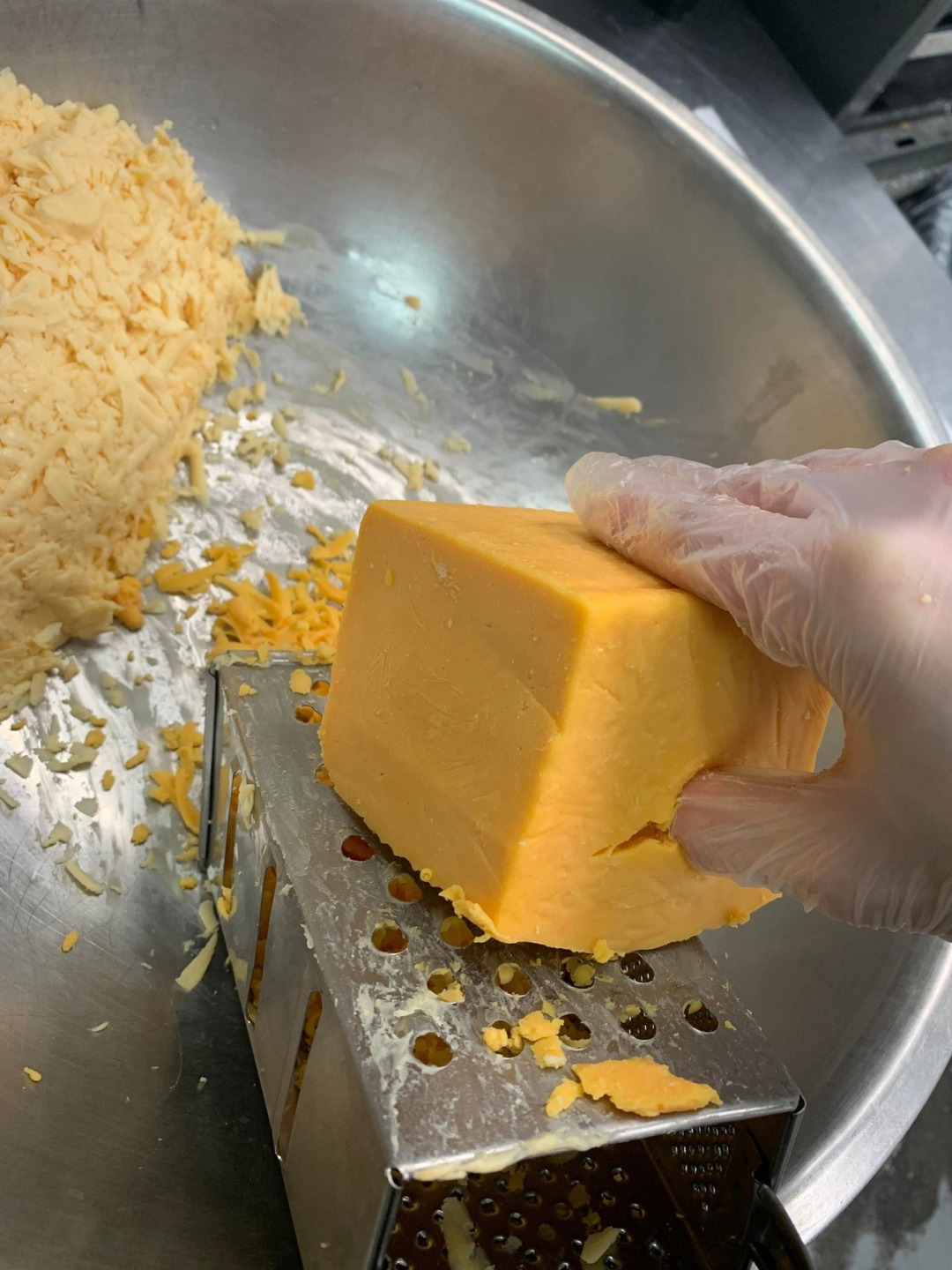Block Cheese vs. Pre-Shredded – A Side-by-Side Test
I tested both in real recipes — and the results were shocking.
Mac & Cheese
Smooth, creamy, velvety sauce
Lumpy, greasy, separated
Tacos
Melted evenly, gooey texture
Sat on top like plastic
Casseroles
Blended beautifully into dish
Formed rubbery patches
Grilled Cheese
Golden, melty, dreamy
Squeaky, oily, under-melted
The difference wasn’t subtle.
It was night and day.
But Isn’t It Just Easier to Buy Pre-Shredded?
Yes — it’s convenient.
But let’s talk numbers:
Grating 1 cup of cheese
~2 minutes
Opening a bag
~10 seconds
Two minutes.
That’s it.
And in exchange?
Better flavor.
Better melt.
Better results.
Plus — freshly grated cheese tastes fresher , because it hasn’t been sitting in a bag absorbing anti-caking agents for weeks.
Bonus Benefits of Using Block Cheese
More flavor
Fresher taste, no additives masking richness
Better nutrition
Pure cheese — no fillers or starches
Cheaper per ounce
Blocks are almost always less expensive than shredded bags
Less packaging waste
One block = one wrapper, not plastic + cardboard + liner
Custom shred size
Want thick shreds for pizza? Fine ones for sauce? You decide
Even better — keep a microplane or box grater near your fridge so grating becomes second nature.
How to Make the Switch (Without Losing Your Mind)
1. Buy Cheese in Bulk
Buy larger blocks when on sale — most cheeses freeze well.
Wrap tightly in parchment + foil, then freeze for up to 3 months.
Thaw in the fridge before grating.
2. Pre-Grate and Store
Grate a big batch and store in an airtight container in the fridge for up to 2 weeks.
No need to re-grate every time.
3. Use the Right Tools
A box grater is fast and efficient.
A food processor works great for large batches.
And if you’re grating hard cheeses like Parmesan?
A microplane is your best friend.
SEE NEXT PAGE
ADVERTISEMENT

